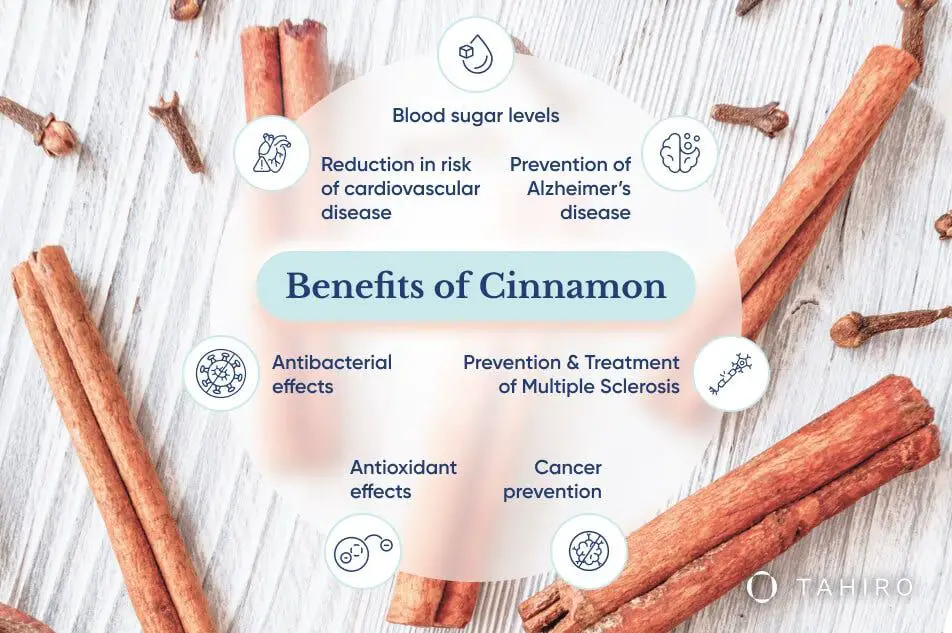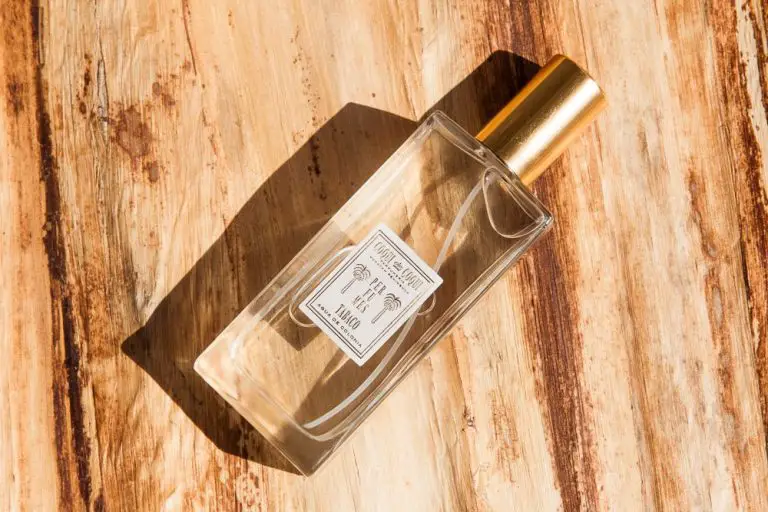What Cinnamon Essential Oil Is The Best?
Cinnamon essential oil is extracted from the bark of the cinnamon tree and contains powerful antioxidants and antibacterial properties. It has been used for centuries in traditional medicine and is commonly used today for its many health benefits. Some of the main uses and benefits of cinnamon essential oil include:
- Fighting infections due to its antibacterial, antiviral, and antifungal properties
- Reducing inflammation and pain
- Improving digestion and treating stomach issues
- Boosting brain function and increasing alertness
- Balancing hormones and relieving menstrual cramps
- Lowering blood sugar levels
- Improving skin and hair health
- Providing antioxidant protection against free radicals
Cinnamon oil can be used topically, inhaled aromatically, or taken internally in small dilutions. When buying cinnamon essential oil, it’s important to choose 100% pure, high-quality oil to get the full benefits.
History and Origins
Cinnamon originally comes from the bark of Cinnamomum trees, which are native to Sri Lanka and parts of India. Cinnamon has been used for thousands of years, dating back to Ancient Egypt where it was highly prized. The Egyptians used cinnamon in the embalming process. Ancient Chinese medicine used cinnamon as early as 2700 BC. Cinnamon was so highly valued that it was considered a gift fit for kings and monarchs. For instance, in the first century CE, Roman Emperor Nero burned a year’s supply of cinnamon at his wife’s funeral. During the Middle Ages, cinnamon became an integral part of Arabic medicine. Arab traders controlled the cinnamon trade and kept its true origins a mystery in order to keep prices high, until the 15th century when Portuguese traders broke the Arab monopoly on cinnamon. Today, cinnamon remains a popular spice used around the world.
How It’s Made
Cinnamon essential oil is extracted from the bark of the cinnamon tree. There are several varieties of cinnamon trees, but true cinnamon essential oil comes from the Cinnamomum verum tree, also known as Ceylon cinnamon.
To extract the oil, the bark is first dried and left to mature for two years. Then, the mature bark is cut into chips or coarse powder. The bark chips are subjected to steam distillation, where steam passes through the bark material and helps extract the essential oil. The vapor mixture of water and oil is then passed through a condenser, which cools the vapor and condenses it back into liquid. The liquid naturally separates, with the essential oil floating on top of the water. The oil is then collected.
Steam distillation helps extract all the beneficial compounds from the bark, including cinnamaldehyde which gives cinnamon its distinctive flavor and smell. It takes a huge amount of bark to produce a small quantity of oil. On average, 1 ton of bark yields only 1 to 2 liters of the essential oil. This makes true cinnamon oil rare and highly prized.
Chemical Composition
Cinnamon essential oil contains many active chemical compounds that contribute to its therapeutic effects. Some of the key components include:1
- Cinnamaldehyde – This compound gives cinnamon its flavor and fragrance. It makes up 50-80% of the essential oil and has antioxidant, anti-inflammatory, and antimicrobial properties.
- Eugenol – A phenylpropanoid that has anesthetic and antiseptic properties. It comprises 2-15% of cinnamon oil.
- Linalool – A terpene alcohol with a floral scent. It has sedative and anti-inflammatory effects.
- β-Caryophyllene – A terpenoid found in many essential oils. It has anti-inflammatory and analgesic properties.
- α-Pinene – A monoterpene with antiviral, anti-inflammatory, and anesthetic effects.
Other chemicals found in smaller amounts include benzaldehyde, limonene, α-phellandrene, camphene, and camphor.2 The exact composition can vary depending on factors like the plant source, geography, age of plant, and extraction method.
Benefits and Uses
Cinnamon essential oil has many well-researched health, beauty, and household benefits. It is a potent antioxidant that can help fight free radical damage and inflammation in the body (Healthline). Research shows it can help lower blood sugar levels and improve insulin sensitivity in patients with diabetes (Dr. Axe). Its anti-inflammatory properties also make it beneficial for reducing muscle and joint pain when applied topically.

The antifungal and antimicrobial activity of cinnamon oil makes it useful for treating infections and promoting oral health. It can be used in homemade cleaners and air fresheners as a natural disinfectant. For skin and hair, cinnamon oil improves circulation, can help treat acne, and stimulate hair growth when applied diluted to the scalp.
Cinnamon oil also provides aromatherapy benefits like relieving anxiety, boosting mood, and increasing focus. Its warm, spicy aroma is uplifting and can help create a relaxing ambiance when diffused.
How to Use
Cinnamon essential oil can be used aromatically, topically, or internally to harness its therapeutic benefits. Here are some ways to use cinnamon oil:
Aromatic Use
To use cinnamon oil aromatically, add 2-3 drops to a diffuser or inhale directly from the bottle. Its warming, spicy aroma is said to promote vitality and energy. You can also add a few drops to potpourri or a cotton ball.
Topical Use
When applied topically, dilute cinnamon oil with a carrier oil like coconut, jojoba, or almond oil. For adults, mix 1 drop cinnamon oil per 1 teaspoon carrier oil. For children, use 1 drop per 3 teaspoons carrier oil. Apply diluted oil to the desired area. Avoid eyes and other sensitive regions.1
Cinnamon oil can also be used in massage blends, baths, lotions, and salves. It’s great for soothing sore muscles when combined with eucalyptus oil.
Internal Use
Cinnamon bark oil can be ingested by adding 1-2 drops to water, tea, or a smoothie. It can also be taken in veggie capsules. However, cinnamon leaf oil should NOT be ingested.2
Due to its potency, be sure to sufficiently dilute cinnamon oil and use sparingly when applying topically or internally.
Buying Guide
When purchasing cinnamon essential oil, there are several factors to consider to ensure you are getting a high quality product:
Purity: Look for 100% pure, therapeutic-grade cinnamon oil. Avoid oils that contain adulterants, fillers, or synthetic ingredients. Reputable brands will disclose the country of origin and extraction method. Steam distillation yields a superior cinnamon oil.
Strength: Cinnamon oil is graded by the concentration of cinnamaldehyde, the compound that gives cinnamon its distinctive spicy aroma and flavor. A quality cinnamon oil will have a minimum cinnamaldehyde content of 50% 1.
Scent: Smell the cinnamon oil before buying. It should have a warm, spicy, sweet aroma without any harsh or chemical undertones. Avoid cinnamon oils that smell like solvents.
Color: The oil’s rich reddish-brown color indicates the presence of plant pigments and essential compounds. Pale yellowish oils may be diluted or low quality.
Certifications: Seek out cinnamon oils that are USDA certified organic, or verified by third-party testing. Reputable essential oil companies provide access to testing reports.
Brand Reputation: Purchase cinnamon oil from established essential oil companies that specialize in quality sourcing and extraction methods. Read customer reviews to help identify the most trusted cinnamon oil brands.
By examining purity, scent, color, certifications, and brand reputation, you can identify and purchase a top-quality cinnamon essential oil for your needs.
Best Cinnamon Oils
There are many high-quality cinnamon essential oils on the market to choose from. When comparing top options, some key factors to look for include purity, strength, aroma, country of origin, and price. Here are some of the best cinnamon oils to consider:
Ethereal Nature offers a 100% pure cinnamon oil that is steam distilled from cinnamon bark sourced in Sri Lanka. It has a strong, spicy aroma perfect for diffusing. This Ceylon cinnamon oil is considered very high quality. It’s on the pricier side at $19.95 for 10ml.
HIQILI’s cinnamon essential oil is made from cinnamon leaves grown in Sri Lanka. It’s 100% pure, undiluted, and therapeutic grade. This oil has a rich, warm, spicy scent and is versatile for aromatherapy, skin care, and household uses. A 10ml bottle costs around $9.
Nature’s Oil offers a cinnamon bark oil sourced from Sri Lanka and steam distilled. It’s USDA certified organic and very potent. This therapeutic grade oil has a strong cinnamon spice aroma. A 60ml bottle costs around $14.
When comparing top cinnamon essential oils, Ceylon cinnamon from Sri Lanka tends to be highest quality. Key factors are purity, sustainability, aroma, and cost. Top brands like Ethereal Nature, HIQILI, and Nature’s Oil offer great options.
Precautions
While cinnamon oil has many benefits, there are some precautions to be aware of before using it:
- Pregnant women should avoid cinnamon oil, as it may stimulate the uterus and could potentially trigger contractions or miscarriage (Source).
- Children and infants should not ingest or be given cinnamon oil, due to the potential for skin irritation and toxicity (Source).
- Cinnamon oil may irritate the skin and mucous membranes, especially if used undiluted. Do a patch test before widespread use (Source).
- Only ingest therapeutic-grade cinnamon oil and use extreme caution, as consuming essential oils carries risks. Never swallow more than 1-2 drops diluted in liquid (Source).
- Avoid applying cinnamon oil near eyes or sensitive areas. Flush with water if irritation occurs (Source).
- Do not take cinnamon oil for extended periods without consulting your doctor, as it may interact with certain medications or conditions (Source).
Being aware of these precautions will help ensure safe and effective use of cinnamon essential oil.
Conclusion
Cinnamon essential oil is an extremely versatile and beneficial oil that has been used for centuries. It’s extracted from the bark of the cinnamon plant and contains powerful compounds like cinnamaldehyde that give it its signature spicy-sweet aroma and offer a variety of medicinal effects.
Some of the key points we covered are that cinnamon oil can help fight infections, reduce inflammation, soothe muscle cramps and pains, balance hormones, enhance brain function, and more. It’s an excellent ingredient for DIY natural health and beauty recipes and blends well with other essential oils.
With its wide array of uses, cinnamon essential oil is a must-have for any wellness tool kit. It’s affordable, accessible, easy to use, and offers a multitude of benefits for both mind and body. Just be sure to always dilute it properly and perform a patch test before applying it topically. When used wisely, this ancient oil remains a valuable resource for holistic health and wellbeing.
In summary, cinnamon essential oil is a time-tested aromatherapy oil that serves many helpful purposes. Its warm, spicy aroma and healing properties make it a key component for overall wellness.



